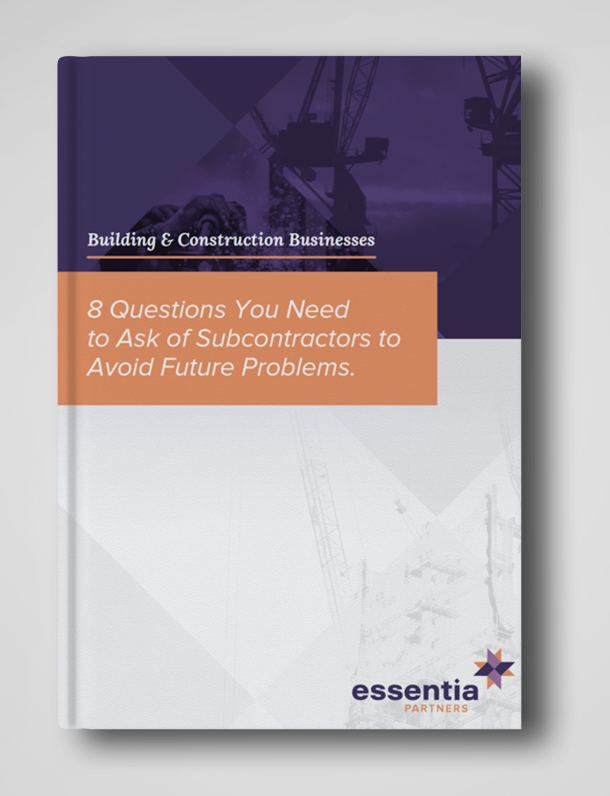
- IN Wealth
Builders in NSW: Home Owners Warranty Insurance Explained
As a NSW builder, it’s important to get to grips with Home Owners Warranty insurance (HOW) to avoid potential problems or delays with building projects and to stay on the right side of regulators.
Home Owners Warranty insurance was introduced in NSW to protect homeowners in the event that a licenced builder or contractor becomes insolvent, dies, disappears, or is suspended.
Here we explain what it is, what you need to do to comply with requirements, and how to overcome problems in obtaining HOW insurance.
What is Home Owners Warranty insurance in NSW?
As a licenced builder or tradesman, you need to have a current policy of insurance, which provides for a pre-determined level of “open job limit” and “open job number” of a designated type of building work, within which you can operate.
You must obtain a certificate of insurance on each domestic project over $20,000, prior to starting work or signing contracts.
In NSW, the Home Owners Warranty system is based heavily on your financial stability as a builder.
While some non-financial risk factors are taken into account, at the end of the day, iCare are looking for builders to have a strong balance sheet, adequate working capital and healthy profit margins to support their business.
Problems in obtaining Home Owners Warranty insurance?
Some NSW builders may have trouble in obtaining (or increasing) their Home Owners Warranty insurance.
This will generally be due to either:
- Your financial position not being strong enough; or
- Your financial information not being presented in the right way to support iCare’s HOW requirements.
Many a good and profitable builder has had trouble obtaining or increasing their Home Owners Warranty insurance eligibility.
If you’re one of those unfortunate builders or contractors, lack of the required insurance will prevent you from starting new work or signing new contracts, so it’s vital to get right and to stay on top of.
Understanding NSW Home Owners Warranty insurance: Key terms
Home Owners Warranty insurance has a language all of its own.
Developing a basic understanding of this language will help you navigate the process of obtaining or increasing the necessary insurance for your business.
Some of the key terms are explained below:
- ANTA – Adjusted Net Tangible Assets
iCare take your balance sheet at 30th June and reduce the carrying value of a select number of your assets to calculate your ANTA. It must be sufficient to support your Home Warranty limits. Insufficient ANTA could mean you’ll need to enter into a Deed of Indemnity, inject capital into the business or reduce your limits.
Often, a profitable and strong business has ANTA problems because of dividends and profits taken out of the business.
A more modern and dynamic dividend strategy can have significant impacts on your ANTA and potentially make the difference between meeting the requirements or not.
One of the key objectives of a business is to deliver profits to its shareholders. The secret is to achieve this whilst also maintaining the ANTA required to support your current HOW limits.
- Working capital
Working capital represents the cash available in the business to operate from day to day.
The availability of a bank overdraft, taxation liabilities, WIP levels etc. are also considered.
Having enough working capital available is an indicator of a business’s ongoing liquidity, viability, and ability to complete projects.
- Work in progress
Major builders and major home builders are required to account for their work in progress (WIP) and deferred revenue in their financial statements, using applicable accounting standards.
Many residential builders organise their progress claims to collect revenue and profits towards the front of the job.
This makes perfect commercial sense; however, central to this is understanding the proportion of these claims that represent profit and the proportion that represents funds required to complete the job.
- Builders Eligibility Assessment Tool (BEAT report)
Each financial year, a BEAT report is produced for each builder, outlining the financial analysis and outcomes. This represents a window into iCare’s analysis.
- Deed of Indemnity
In cases where the ANTA of a businesses is insufficient to cover its Home Owners Warranty limits, iCare may require a Deed of Indemnity.
This deed takes security over the directors’ assets (usually their home).
Whilst not ideal, it does present a solution and is viable in situations where the builder or contractor does not want to, or can’t, maintain sufficient ANTA in their business.
Forecasting future Home Owners Warranty insurance requirements
It’s important to forecast future Home Owners Warranty insurance requirements to ensure the growth of your NSW building business is accommodated.
You’ll want to avoid the situation where a new client contract must be delayed until a completed job drops off your list!
It helps to conduct some strategic planning in the lead up to requesting an increase in eligibility. This will make the process smoother and avoid unnecessary problems and unwanted delays.
Next steps…
Do you have doubts or concerns over obtaining the necessary NSW Home Owners Warranty insurance?
Now you understand more about HOW insurance, you’ve taken the first step. The next is to get some help from established professionals to help drive your business to success.
We’re not just building and construction company accountants. We can help you organise the necessary insurance and get your business in a position to start the projects that contribute to your growth.
Contact us for an initial chat.


